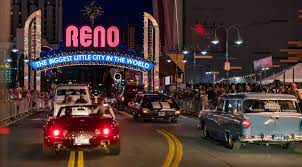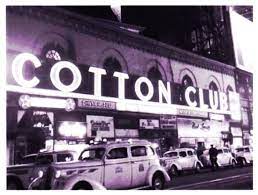Introduction and Thesis
With its specific origins unknown, Jazz came into prominence in the 20th century. Its sounds are a fusion of many forms of African American music, from call-and-response to blues and ragtime. There are many styles of jazz including bebop, hard bop, soul jazz, and free jazz. In this article, the influence and significance of jazz clubs and jazz bars in spreading and reshaping jazz music will be explored.
Jazz Evolution: Bebop
The first style of jazz was bebop, also known as bop, which served as the transition between “popular culture” to “the intellectual status.” Bop included scat vocals and featured performers like Louis Armstrong in “Heebie Jeebies,” and Cab Calloway in “Zah Zuh Zah.” This style of jazz developed in New York in Manhattan and Harlem in the 1940’s. Here the influence of jazz bars comes in! According to OnMusic Companion, “Both small cabaret-style jazz clubs in Harlem catered to musicians and a devout clientele interested in intimate performances… in addition, older, more established musicians such as Coleman Hawkins, Lester Young, Mary Lou Williams, and others participated in these jam sessions, providing critical inter-generational influences that rooted bebop innovation within a larger historical framework.” Jazz clubs were an integral part of popularizing not only the music but the language and general culture of the music scene.
Swing style jazz featured solos, improvisation, and syncopation with large orchestral bands; however, the commodification and commercialization of Swing Era jazz (exemplified by the white Andrews Sisters’ song “Boogie Woogie Bugle Boy”) acted as the catalyst for young performers to search for alternative forms of the genre like dramatic melody, rhythm, and harmony. As these newer styles became more popular, the influence of “clubs along Midtown Manhattan’s famed 52nd Street (known informally as Swing Street) played host to many bop acts. By 1943, several bebop pioneers held regular engagements along 52nd Street, including Kenny Clarke and Dizzy Gillespie” (DeVeaux 1988, 150-1). After World War 2, the legitimacy of bebop was questioned by many artists like Armstrong as “unmusical and cult-like” with “weird chords.” Despite the widespread criticism from such notable jazz figures, little diminished the growing outreach of this jazz style. This was undoubtedly made possible by the jazz clubs and bars filled with the jam sessions made by the artists who worked to reclaim the African American identity within jazz.
Jazz Clubs and Jazz Bars



In the era of prohibition, “mob-controlled Chicago in the 1920s, dozens of illicit drinking clubs sprang up and competition for customers was fierce. By providing entertainment you could lure more customers into your establishment, and jazz, with its dance origins, was ideal music for the party atmosphere the clubs wanted to foster,” (Guilfoyle). Mobsters like Al Capone would want only the best performers to attend their clubs to increase the profits of their illegal business. Jazz clubs gained their more louche or shady origin because of this reason, but when prohibition ended the jazz clubs were still alive and well. According to the Journal of Music, “Right up until the end of the 1960s, this was the environment in which the most important innovations and developments in jazz took place and were on display,” (Guilfoyle). Playing nearly every night for hours on end, performers developed imperative and unmatched stamina and instrumental expertise, showcased by John Coltrane and Bill Evans. Single jazz clubs played all forms of the genre, ranging from Louis Armstrong to Miles Davis to Dizzy Gillespie to John Coltrane. Famous clubs included the Cotton Club, Reno Club, and Village Vanguard.
Conclusion
Jazz clubs and bars do not have their social impact and influence on the present as they did in the years past. Their appeal has diminished, and their dangerous and more shady reputation make it seem as though they never had any impact on our current music scene–simply a whisper of what was only in the distant past. Yet, this is further from the truth. It was in these spaces where jazz could spread, reshape, evolve, and thrive. Without jazz clubs and bars, African Americans would have had one less way to express their identities and emotions in a world where they already had so little avenues of expression. Away from the mainstream influence, here black artists could simply create and be.
References
OnMusic Companion
The Rise of Jazz and Jukeboxes
https://journalofmusic.com/opinion/intense-innovation-jazz-clubs-and-evolution-jazz
https://www.vice.com/en/article/9398zv/how-these-jazz-bars-defined-atlanta-in-the-1960s

